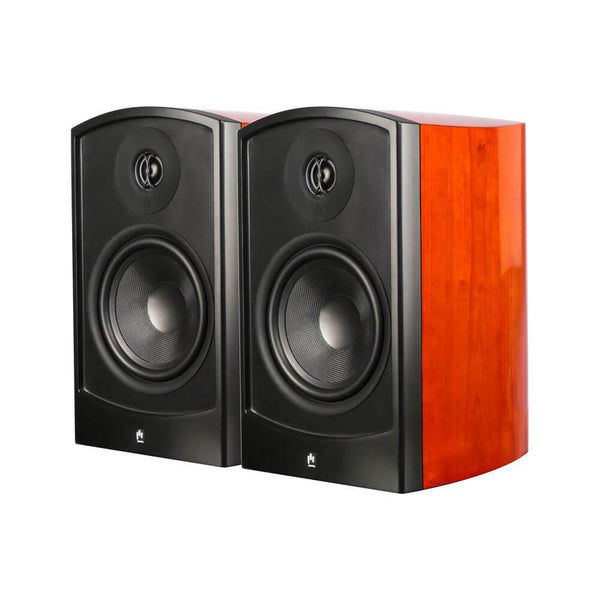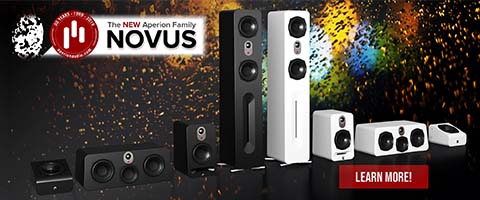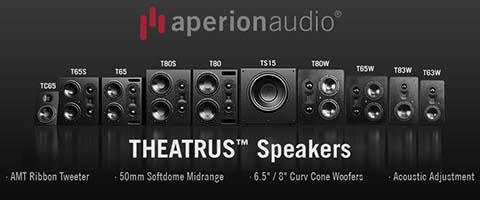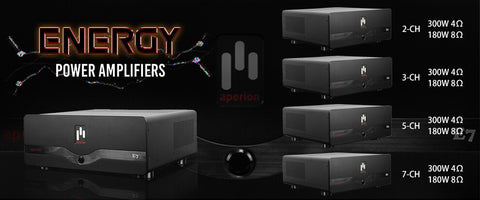

- - - - - - - - - - - - - - - - - - - - - - - - - - - - - - - - - - - - - - - - - - - - - - - - - - - - - - - - - - - - - - - -
How Do They Go Low?
Room boundaries affect bass so much that speakers need to be designed for a fairly specific location within a room in order to keep the bass in balance with the rest of the sound. So the first rule is to put the speakers where they’re meant to go. If the manufacturer isn’t clear about this, trust your ears – but here are some rules of thumb that should get you pretty close for starters:
- Small speakers should be on stands or a bookshelf so that their tweeters are near your ear level and their backs near to the wall. If they have an air vent on the back, they should be kept at least a few inches from the wall.
- Tower speakers should be placed about 2’ (or more) from the back wall.
- Avoid corners. Two exceptions are speakers designed for corners (rare as the albatross) and subwoofers. See our course How to Get the Most From Your Sub for subwoofer placement tips.
- Avoid left / right symmetry, especially with respect to corners, halls and walls. It’s okay to have your speakers symmetrical with each other, but make sure they’re not exactly symmetrical to the room.

When evaluating bass performance by ear, listen for balance. You can always bring the level of deep bass up or down by moving the speakers closer or further from walls and corners. You’ll want to keep the bass fairly constant as you move around the listening area. Try putting on a CD with a strong, repeating bass line (pink noise, if you have access to it, is even better than Pink Floyd) and move around the room. You may be shocked at how uneven the bass can be. Re-position the speakers until the bass is fairly even and listen for a bass quality that is strong but tight — not boomy or droning. It’s tricky to even out the sound so some bass notes don’t dominate while others disappear, but be patient.
If you’re using subwoofers, you still might want to experiment with the left and right placement of your speakers, concentrating on maintaining the mid-bass richness so that male vocals don’t sound thin or lacking body. If you notice this loss, try moving the speakers a little further out into the room.
- - - - - - - - - - - - - - - - - - - - - - - - - - - - - - - - - - - - - - - - - - - - - - - - - - - - - - - - - - - - - - - -
Sound Stage & The Sweet Spot
A worthy pair of speakers can perform an amazing illusion reminiscent of looking through a 3-D ViewMaster™. When correctly placed, a three-dimensional sound stage magically appears between your speakers. Instruments and sounds appear to come from locations where your eyes tell you there’s nothing! This isn’t magic, it’s physics! Making this happen dramatically requires getting many things right – good stereo material, controlling room reflections, good speakers – but most importantly, getting your speakers and listening area set-up properly. Fortunately, this is pretty easy:
- The listening area needs to be exactly in the center of both speakers. Use a tape measure if you want to get really accurate.
- The distance between the speakers should be 75% to 100% of the distance that you are from them.
- You’ll want to keep your speakers at least 2 feet away from walls and the floor (tower speakers are OK on the floor.) Don’t worry too much if this isn’t practical, if you move them closer to the wall, the virtual soundstage will still appear – it just won’t have the same depth.
- Likewise, you’ll want to keep your listening area more than 2’ from any walls or large reflective objects.
- It helps to have a room that deals well with sound reflections – sound absorbers like rugs and drapes, sound scatterers like bookcases and “things” all help.
- Some speakers are better at this than others with smaller speakers often having the advantage.
Most modern audio systems are set up for multi-channel home theater use, but lead a double life when you play a stereo CD. The front left and right speakers transform themselves from a supporting role handling off-screen effects to the lead performers. When these stereo speakers revert back to their home theater roles, the supporting cast of center channel speaker and surround speakers make it much easier to envelop you with surround sound. Additionally, this effect isn’t limited to one “sweet spot” like the stereo sound stage described above, but can be shared by others who are nearby. Properly setting up your home theater surround sound is covered in another class but, for now, know that the speakers you so carefully positioned for great music performance will work very well for home theater as well.
- - - - - - - - - - - - - - - - - - - - - - - - - - - - - - - - - - - - - - - - - - - - - - - - - - - - - - - - - - - - - - - -
Room livability
One should never forget that the whole idea is to create a room for enjoyment – making sensible compromises in the name of comfort or aesthetics is certainly no crime. Besides — your spouse wasn’t going to let you get away with putting those speakers in the middle of the bedroom anyway.
- - - - - - - - - - - - - - - - - - - - - - - - - - - - - - - - - - - - - - - - - - - - - - - - - - - - - - - - - - - - - - - -
In Conclusion
Moving gear and couches around isn’t fun or glamorous. Which is why many of the guidelines above are aimed at helping you position things well with a minimum of “experimentation”. But once you have completed this important (and free we might add) exercise, you’ll be amazed at how good your system sounds.

Complete Your Sound System Solution

Sign up for our newsletter below, and join our social media groups to stay up to date with the latest news and information from Aperion Audio!
 |
 |








 https://www.aperionaudio.com
https://www.aperionaudio.com